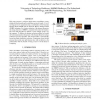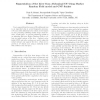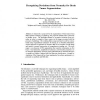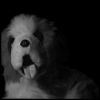CEC
2005
IEEE
14 years 9 months ago
2005
IEEE
Abstract- Markov Random Field (MRF) modelling techniques have been recently proposed as a novel approach to probabilistic modelling for Estimation of Distribution Algorithms (EDAs)...
ICMCS
2008
IEEE
14 years 10 months ago
2008
IEEE
This paper presents a real-time single-camera surveillance system, aiming at detecting and partly analyzing a group of people. A set of moving persons is segmented using a combina...
CISIS
2008
IEEE
14 years 10 months ago
2008
IEEE
Liver segmentation from scans of the abdominal area is an important step in several diagnostic processes. CT scans of the abdominal area contain several organs in close proximity ...
ICB
2009
Springer
14 years 10 months ago
2009
Springer
In this paper, a Bayesian method for face recognition is proposed based on Markov Random Fields (MRF) modeling. Constraints on image features as well as contextual relationships be...
RECOMB
2005
Springer
15 years 4 months ago
2005
Springer
Abstract. Protein-protein interactions play a major role in most cellular processes. Thus, the challenge of identifying the full repertoire of interacting proteins in the cell is o...
ICML
2006
IEEE
15 years 5 months ago
2006
IEEE
In this paper, we use large neighborhood Markov random fields to learn rich prior models of color images. Our approach extends the monochromatic Fields of Experts model (Roth &...
MICCAI
2002
Springer
15 years 5 months ago
2002
Springer
A framework is proposed for the segmentation of brain tumors from MRI. Instead of training on pathology, the proposed method trains exclusively on healthy tissue. The algorithm att...
ICPR
2002
IEEE
15 years 5 months ago
2002
IEEE
Markov Random Fields (MRFs) are proposed as viable stochastic models for the spatial distribution of gray level intensities for images of human faces. These models are trained usi...
ICPR
2004
IEEE
15 years 5 months ago
2004
IEEE
In this paper we address the problem of simultaneous estimation of structure and restoration of images from blurred photometric measurements. Given the blurred observations of a s...
ICPR
2006
IEEE
15 years 5 months ago
2006
IEEE
This paper integrates Markov random fields (MRFs) with type-2 fuzzy sets (T2 FSs) referred to as T2 FMRFs, which can handle the fuzziness of the labeling space as well as the rand...





